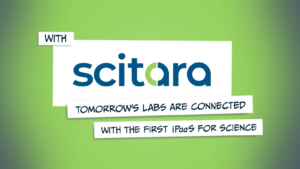Though many industries are benefitting from the transformative power of Industry 4.0, the pharmaceutical industry continues to lag. In this blog we explore:
- How legacy systems delay progress
- A new approach to digitalization that leverages lab automation software
- The benefits of digital transformation
HOW LEGACY SYSTEMS ARE DELAYING PROGRESS
For the pharmaceutical industry—like many other industries—COVID-19 illuminated the need for digitalization. For most pharmaceutical labs, this has required a careful review of legacy informatics systems.
As data silos with point-to-point connections and vendor-controlled data repositories, these systems have hampered the free flow of lab data for decades and continue to slow—or stop—digital adoption.
They are not cloud-enabled
On-premises informatics systems like the ones often found in today’s pharmaceutical labs cannot easily connect all the lab assets within the global laboratories of large companies. This makes it impossible to seamlessly share data in real-time across multiple locations—and limits the speed and scope of research.
They are labor- and time-intensive
Most legacy informatics systems were not built to support the sheer scale of today’s research efforts—and do not adhere to modern standards of software design. From confusing user interfaces to tedious, time-consuming workflows, they often force scientists to do things manually, increasing the likelihood of error. Not to mention the cost to maintain them.
They have created technological inertia
Inefficient manual workflows and disconnected systems slow research and inhibit innovation. But they also represent a significant investment—and cannot be abandoned altogether. This has made it difficult for pharmaceutical labs to effectively adopt emerging technologies, especially given resistance to change.
A NEW APPROACH TO DIGITALIZATION THAT LEVERAGES LAB AUTOMATION SOFTWARE
Modular, pluggable components are enabling today’s labs to simplify and modernize legacy informatics infrastructure incrementally. This enables them to:
- Configure a solution that works with their legacy systems—and allows them to maneuver through the transition to digital, cloud-based technology with maximum flexibility.
- Increase the value of their existing informatics and get a greater return on their initial investment in those systems.
- Transform lab infrastructure slowly and strategically—to intelligently implement a common lab instrument integration platform approach that gives scientists greater control over their data and enables them to accelerate science.
THE BENEFITS OF DIGITAL TRANSFORMATION
Taking a planned and measured approach to lab modernization makes connecting disparate instruments, applications, web services and informatics to a common, cloud-based platform a logistical and financial reality.
This opens the door to Industry 4.0 and enables modern pharmaceutical labs to:
- Eliminate point-to-point connections, proprietary, hardwired data lakes and other silos
- Separate data mobility from data aggregation
- Connect every instrument and application across the entire lab enterprise
- Facilitate the free exchange of data between scientists, labs and businesses
Meet the modern lab
Scitara’s DLX technology gives labs an opportunity to integrate digital technologies without completely gutting their legacy informatics infrastructure.
It is a new approach that heralds a new era of possibilities and opportunities.
Learn more now.
